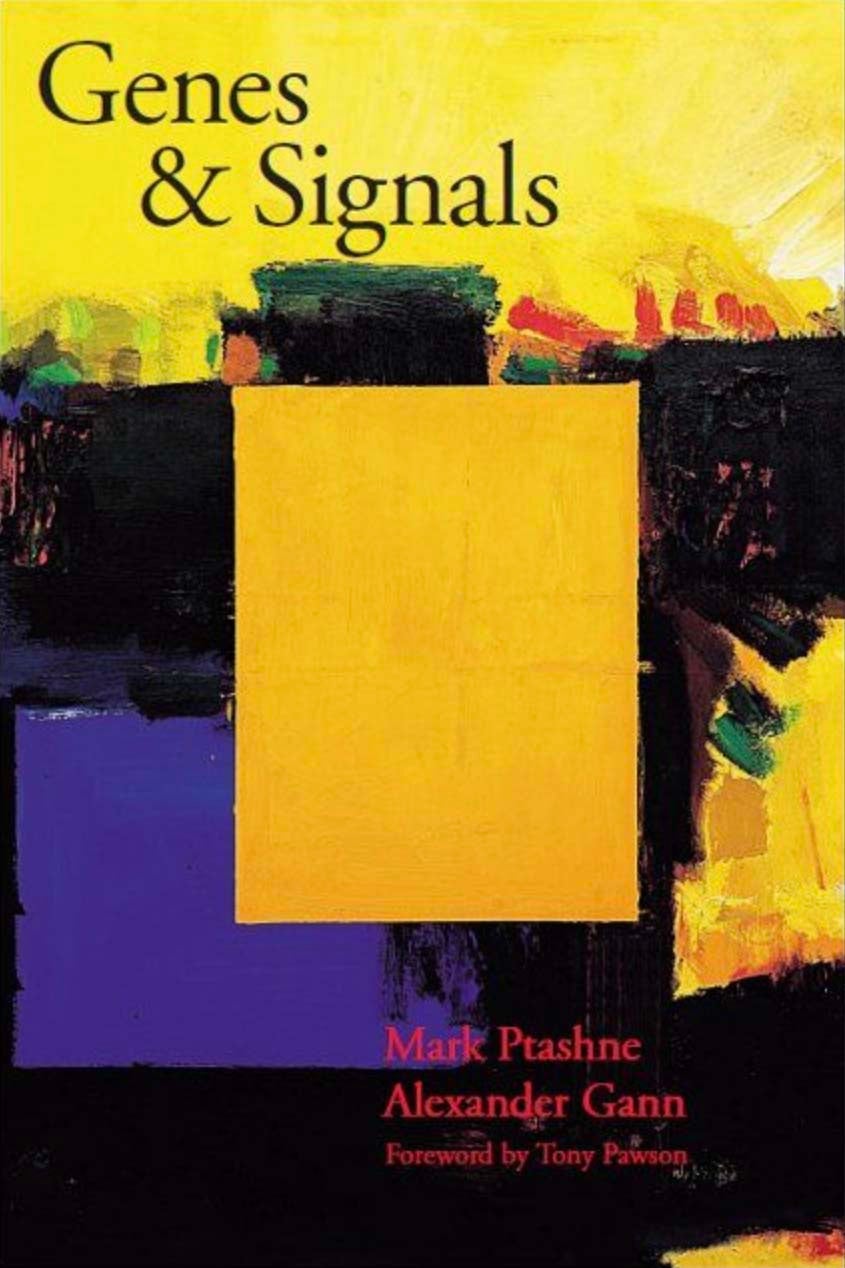The preeminent French scientist and 1965 Nobel laureate Jacques Monod famously remarked, “What’s true for E. coli is true for an elephant.” Monod was expressing his view that common mechanisms underlie gene regulation in diverse biological settings ranging from the simple to the complex.

In a new book, Genes & Signals (Cold Spring Harbor Laboratory Press, 2002), Mark Ptashne of Memorial Sloan-Kettering Cancer Center and Alexander Gann of Cold Spring Harbor Laboratory provide a lucid description of a fundamental gene regulation mechanism that we now know is found throughout biology. Moreover, Ptashne and Gann describe how a similar mechanism underlies not only gene regulation but also other molecular processes within cells, including signal transduction, protein degradation, and pre-mRNA splicing.
Genes & Signals begins with an introduction that views gene regulation from developmental and evolutionary perspectives and places its study in a historical context. This is followed by a chapter (“Lessons from Bacteria”) in which the authors introduce three ways gene expression is regulated in bacteria. One of these—regulated recruitment—becomes a theme that Ptashne and Gann return to in all subsequent chapters (“Yeast: A Single-celled Eukaryote,” “Some Notes on Higher Eukaryotes,” and “Enzyme Specificity and Regulation”). In this way, the authors show that a wide range of seemingly diverse phenomena can in fact be explained by variations on the theme of regulated recruitment. The roles of adhesive molecular surfaces, cooperativity, and allostery in regulated recruitment are all examined in Genes & Signals, as are the contributions of signal integration and combinatorial control to the generation of biological complexity.
Throughout Genes & Signals, the authors describe pivotal experimental approaches and provide references to noteworthy books and review articles. Illustrations are abundant and well-executed. Like its influential predecessor, A Genetic Switch (Ptashne, 1992, 2nd edition), Genes & Signals has the feel of an extended intellectual conversation.
Although it is most useful for graduate and undergraduate students and their teachers, Genes & Signals belongs on the shelf of anyone interested in molecular biology, genetics, or biochemistry. In addition, the book provides readers interested in development or evolution an intriguing perspective on the molecular origins and “evolvability” of complex systems.
Each chapter of Genes & Signals is headed by an illustrative, philosophical, or whimsical quote. For the final chapter heading, Ptashne and Gann echo the unifying theme of Genes & Signals with the words of Oscar Wilde: “We live, I regret to say, in an age of surfaces.”
Genes & Signals
By Mark Ptashne and Alexander Gann
2002, 192 pp., illus., indexes
Hardcover $59 ISBN 0-87969-631-1
Paperback $39 ISBN 0-87969-633-8
For more information or to order Genes & Signals, visit the Cold Spring Harbor Laboratory Press website.
Advance praise for Genes & Signals
“I read this book with great pleasure. I have always been convinced that the same principles operating in bacteria are also operating in higher organisms with added complexity. The question, therefore, is to understand what kind of complexity is involved and how it is geared. This is a necessary book (which is a rare thing!).” —François Jacob
“There is nothing out there that gives such a broad, deep and up to date view of transcription regulation and the general problem of specificity. My students think the book is greatimportant ideas and concepts are clearly described and beautifully illustrated.”
—Tom Maniatis, Harvard University
Written by: Communications Department | publicaffairs@cshl.edu | 516-367-8455